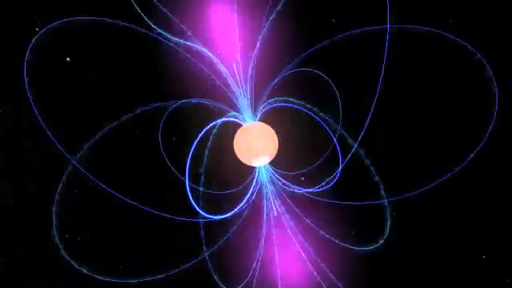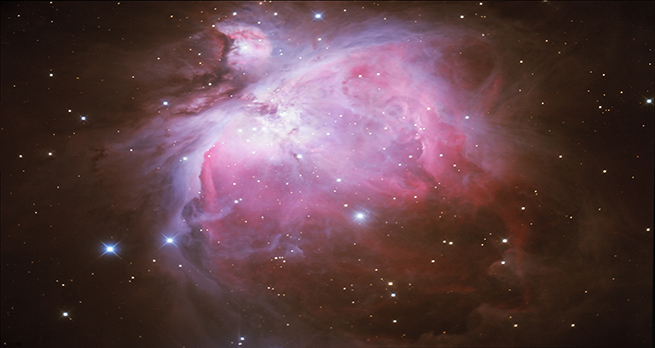2.3.8 Neutron stars
In the description of a white dwarf, you heard that they had masses up to about 1.4 times that of the Sun.
In stellar remnants more massive than this, the force of gravity again comes into play, and the remnant collapses in on itself, forming a neutron star.
Note: this video has no sound.

Neutron stars are very small, super-dense stars composed almost entirely of tightly-packed neutrons, only about 10–20 kilometers across. Neutron stars are around 100,000 million million times as dense as a rock. These huge densities mean that neutron stars also have powerful gravitational fields.
Another extreme property of neutron stars is the rate at which they rotate, up to several hundred rotations every second. Imagine watching a skater spinning. As they pull in their arms, the rate at which they spin increases. This is exactly the same phenomenon that takes place during the collapse of the remnant which leads to the formation of a neutron star. The comparatively slow rotation of the original star rapidly increases as the star contracts by a factor of almost a million.
It is possible to measure the rotation rate of a neutron star directly because it sends out beams of radiation (mainly radio waves). The result is a regular series of pulses that show how quickly the star is rotating. They also give neutron stars their alternative name: pulsars.
Next, you’ll hear about black holes.
